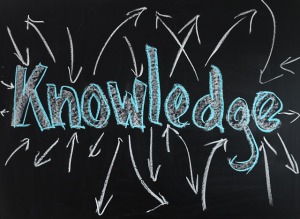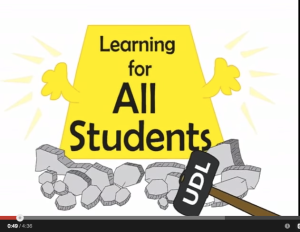The Center for Applied Special Technology (CAST) is a leading proponent of the Universal Design for Learning (UDL). “Universal design for learning (UDL) is a framework to improve and optimize teaching and learning for all people based on scientific insights into how humans learn. Watch the video below to get an overview of UDL” (CAST).
We know that all students learn differently. As educators, it is important to understand that one-size does not fit all. I am my own example. My strength is visual learning. Even at my age, I have a hard time listening to someone speak longer than 20 minutes. I seriously get antsy. I need to move my legs. My mind wanders. I start to make-up jokes in my head to entertain myself. Sorry, I’m just being honest here! I need to be engaged with pictures and movement. UDL offers a framework for creating learning environments that are flexible and help accommodate various learning styles.
I recently stumbled upon UDL on Campus. It is a guide for Universal Design in Higher Education. It begins with assessment. “This resource describes how to apply the principles of UDL to postsecondary assessments to help identify and minimize construct-irrelevant barriers in order to increase the relevance and accuracy of assessment measures.” There are also guides for choosing media/technology, improving institutional policies, planning your course, and teaching approaches. Innovations and the increase in technology have helped increase accessibility of course content to students, an important factor of UDL. UDL on Campus provides a guide to blended learning and planning core content through synchronous and asynchronous examples.
UDL works through these 3 principles (UDL on Campus)
1. Representation: High quality learning environments must provide multiple means of representing concepts.
2. Action and Expression: High-quality learning environments must include multiple ways for acting upon material, as well as demonstrating knowledge and understanding.
3. Engagement: Students must be able to engage with the content and with each other in a variety of ways.
So please – don’t always lecture (representation). Do something other than chapter tests (action & expression). Allow students to engage with the instructor and with each other in a variety of ways (Poll Everywhere, Socrative, student-lead discussions, Twitter, hands-on projects, etc.)
Want to learn more? Check out some of these resources:
National Center on Universal Design for Learning
Postsecondary Education and UDL
University of Vermont Resources


